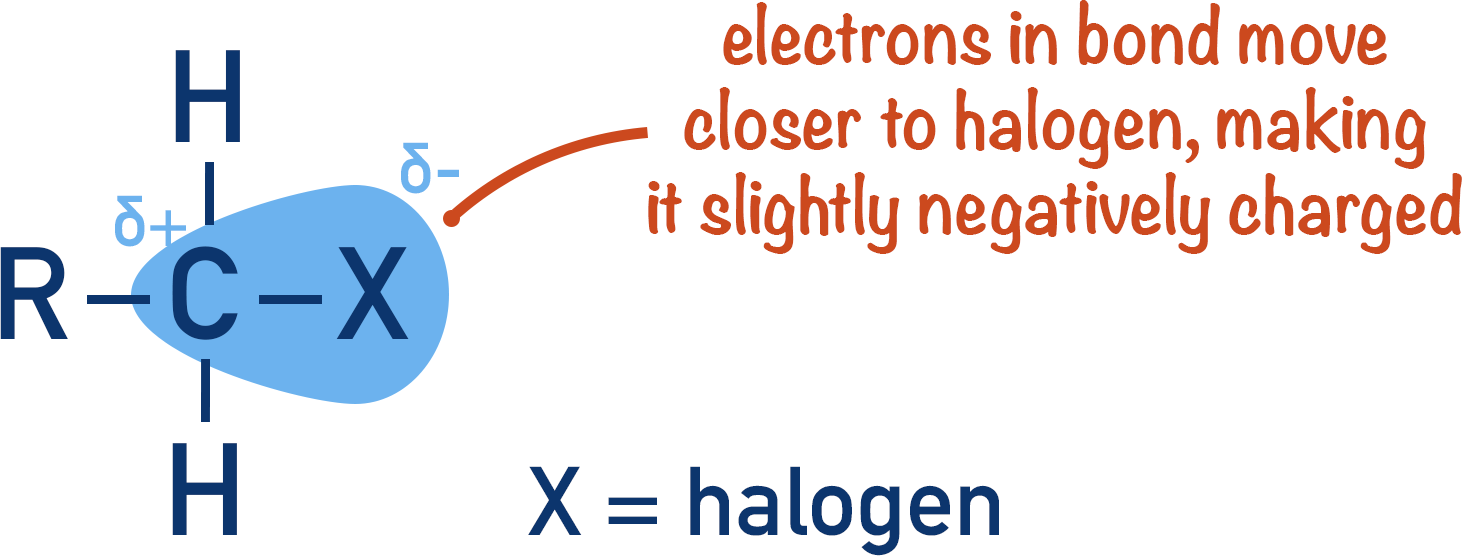Video Tutorial Producing Primary Amines
Quick Notes Producing Primary Amines
- Primary amines are formed by the reaction of a halogenoalkane with ammonia.

- Ammonia acts as a nucleophile and is substituted for the halogen, making the mechanism nucleophilic substitution.
- Ammonium ions are formed at the end of the reaction because the ammonia (not the halide ions) removes a proton from the positively charged nitrogen in the intermediate.
Full Notes Producing Primary Amines
Primary amines can be formed by the reaction of a halogenoalkane with ammonia.

The carbon-halogen bond in a halogenoalkane is polar. As halogens are highly electronegative elements, the carbon atom has electrons pulled away from it by the halogen atom.

The carbon has a partial positive charge; the halogen atom has a partial negative charge.
The Mechanism (Nucleophilic Substitution)
The nitrogen atom in ammonia has a lone pair of electrons that enables it to act as a nucleophile (electron donating species). The lone pair of electrons are attracted to the partial positive charge of the carbon atom, meaning the nitrogen from the ammonia ‘attacks’ the carbon and forms a covalent bond.

At the same time, electron density from the carbon-halogen bond is pushed towards the halogen, and the bond is polarised sufficiently to break.
The ammonia is substituted for the halogen group.
The nitrogen atom from the ammonia now has too many bonds and a positive charge.

To address this, a nitrogen-hydrogen bond breaks, so the electrons from that bond go to the nitrogen atom and a hydrogen ion, H+, is released.

The positive hydrogen ion released is ‘picked-up’ by ammonia (present as a reactant) and an ammonium ion is produced. An ammonium ion has a positive charge and is attracted to the negative halide released in the first step of the mechanism above. An ammonium-halide salt is formed.
We’ve launched our new site! 🎉
Course-specific notes with built-in search!
AP • A-Level (AQA • CIE • Edexcel • OCR) • IB • NCERT 11 + 12
over 750+ new pages and 3,500 images.
Visit the new homepage
